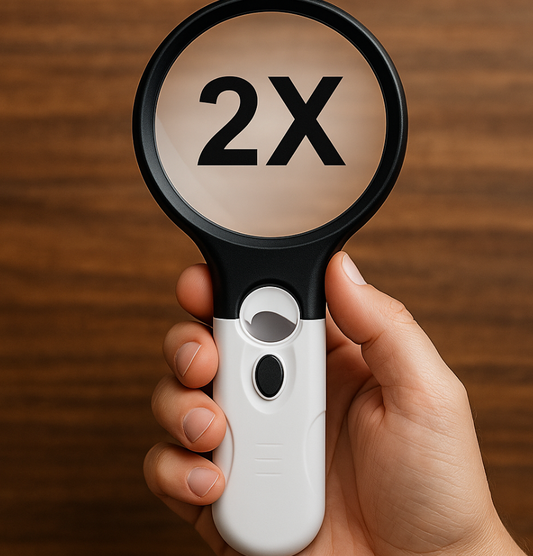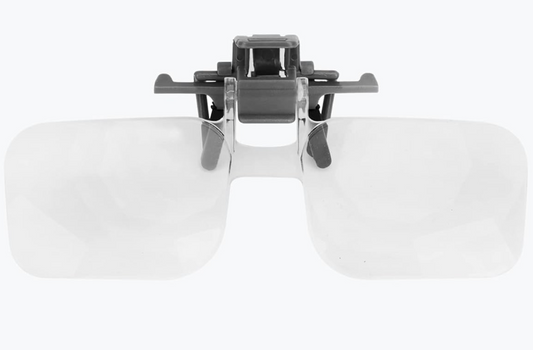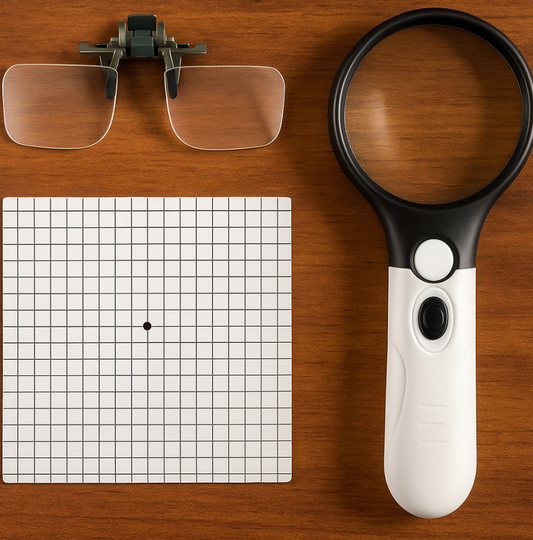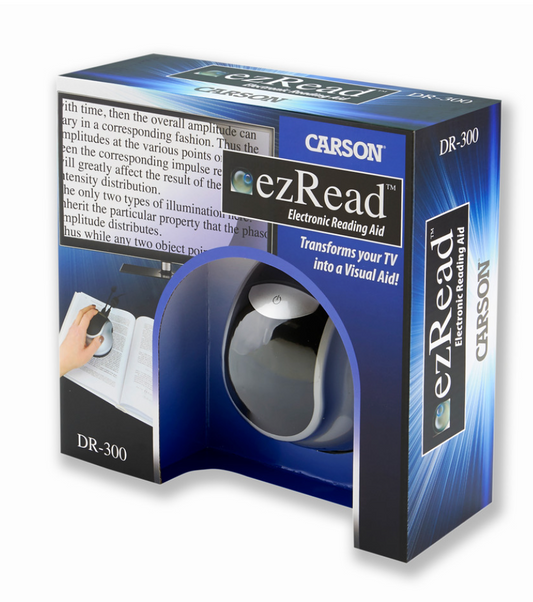Dry Eyes - Diet, Drops & Dedication!
Share
Dry eye syndrome, or dry eye disease, occurs when your eyes don't produce enough tears or when the tears evaporate too quickly (you're making enough tears, but they aren't high enough quality), leading to discomfort and potential vision issues.
When your vision fluctuates throughout the day - this is typically a sign of dry eyes as opposed to something more serious. Many patients say their vision is blurry when they wake up, then clears for the rest of the morning / early afternoon, and then blurs again as evening comes.
Your eye doctor may recommend some lifestyle changes and eye drops to help with your symptoms. In advanced cases, treatments that use lasers (IPL) and red light (low level light therapy) may be needed.
Symptoms of Dry Eye
- Stinging or burning sensation in the eyes
- Scratchiness or grittiness, feeling like there's something in your eye
- Sensitivity to light (photophobia)
- Redness in the eyes
- Blurry vision, especially after prolonged periods of focus
- Eye fatigue or difficulty reading or working on a computer
- Excessive tearing, which may seem counterintuitive but is a response to irritation - basically, your eye is over-reacting to the dryness
Common Causes of Dry Eye
- Aging: Tear production tends to decrease with age.
- Environmental factors: Exposure to wind, smoke, or dry climates can increase tear evaporation. Those living in northern climates who tend to need heat on more often tend to suffer more.
- Screen time: Extended periods of staring at screens can reduce blink rates, leading to dryness.
- Medications: Certain drugs, including antihistamines, decongestants, and antidepressants, can reduce tear production.
- Medical conditions: Autoimmune diseases like Sjögren's syndrome, rheumatoid arthritis, and thyroid disorders can contribute to dry eye. One of the first questions I ask all my patients with dry eye is if there are underlying auto-immune conditions.
- Contact lens use: Wearing contact lenses can affect tear film stability.
Improving Dry Eye Symptoms
Managing dry eye often requires a combination of treatments to restore moisture and comfort to the eyes.
1. Lubricating Eye Drops
Over-the-counter artificial tears can provide immediate relief by supplementing natural tear production.
For patients with occasional dry eye symptoms, Hyabak as needed or recommended by your optometrist is a good place to start for immediate relief.
For patients who are struggling more with their dry eye, or have tried something like Systane or even Hyabak and can't seem to use it enough throughout the day to help with their symptoms - we recommend Thealoz Duo. This combination drop stabilizes the tear film, reduces inflammation, and restores osmotic balance, offering significant symptom relief.
2. Heat
Applying a warm/hot compress or using microwaveable eye masks can help unclog meibomian glands, which secrete oils that prevent tear evaporation.
Heat tends to make a long standing impact on your dry eye symptoms. Regular use can improve tear quality and reduce symptoms for the following day (and sometimes week). Products like the Bruder Moist Heat Eye Compress are easy to use and clinically proven to help your dry eye symptoms.
3. Omega-3 Supplements
Omega-3 fatty acids have anti-inflammatory properties that can enhance tear production and quality. Supplements such as PRN Omega Essentials are our top recommendations as they have the correct EPA/DHA balance.
It's advisable to consult with a healthcare provider before starting any new supplement regimen, especially if you are currently on any blood thinners.
4. Lid Care
Blephadex Lid Wipes soothe and relieve dry eye by gently cleansing the eyelids and lashes, removing debris, oils, and irritants. Infused with tea tree oil and coconut oil, they reduce inflammation, hydrate the skin, and promote healthy tear production. Ideal for daily use, they leave eyes feeling refreshed and comfortable.
Additional Tips
- Environmental adjustments: Use humidifiers to maintain air moisture and avoid direct exposure to fans or air conditioning. Humidifiers in your bedroom at night and even a small unit for your office during the day can make a huge difference in your symptoms.
- Blink regularly: Especially during prolonged screen use, to maintain tear film stability.
- Stay hydrated: Adequate water intake supports overall eye health.
- Limit contact lens wear: Try to reduce your lens wear by 1-2 hours each day
If over-the-counter solutions don't provide sufficient relief, consult an eye care professional for personalized treatment options. Early intervention can prevent complications and improve quality of life for those affected by dry eye syndrome.
Consistency is key when dealing with dry eye symptoms. Choosing 1 or 2 options (drops, omega 3, heat, humidifiers etc) and doing them on a daily basis tends to improve symptoms more than doing everything once every month or two.



